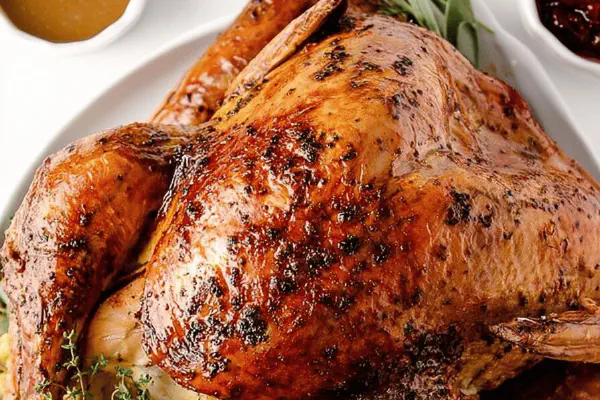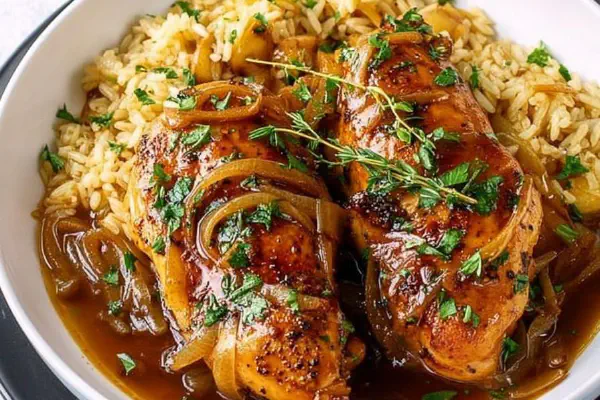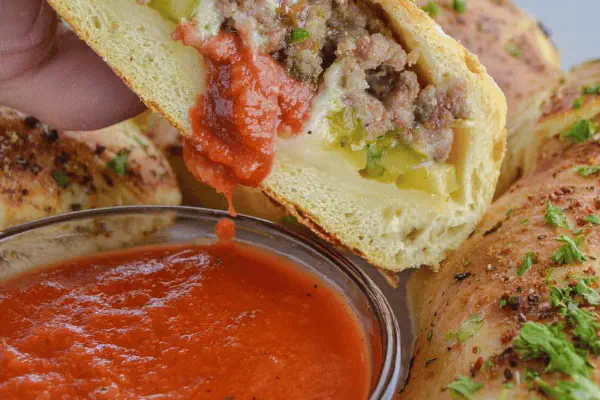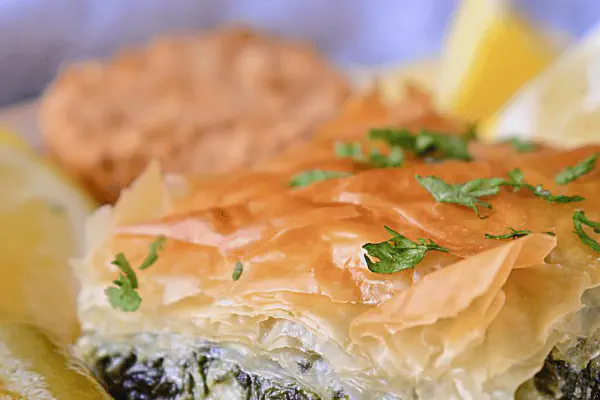Stuffed Bell Peppers Remix
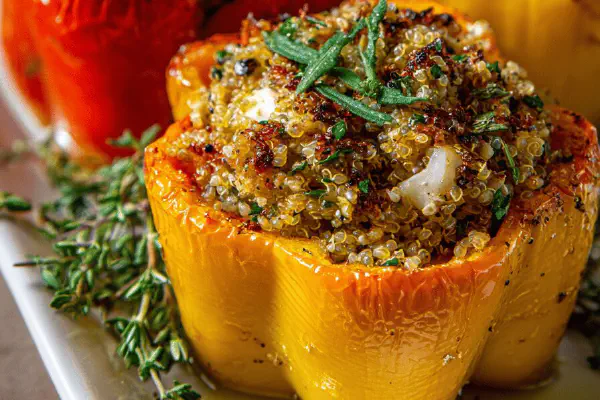
By Emma
Certified Culinary Professional
Ingredients
- 4 bell peppers mixed colors red yellow orange
- 450 ml leftover turkey roast stuffing or similar herb-based stuffing
- 180 ml cooked quinoa (about 3/4 cup) for better bite
- 25 ml olive oil (about 1 1/2 tablespoons) plus extra for drizzling
- fresh thyme or parsley for garnish
- salt and freshly cracked pepper to taste
About the ingredients
Method
- 1. Set oven rack center. Preheat oven to 175 °C (350 °F). Those peppers should crisp up while softening.
- 2. Cut tops off peppers, remove seeds and membranes. If peppers wobble stand on their own, trim base a bit but not too much or juice spills.
- 3. Mix leftover stuffing with quinoa in a bowl. Taste and add salt pepper now; stuffing can be bland cold.
- 4. Spoon mixture into each pepper, fill to top but don’t pack too tight; stuffing expands when heated. Replace tops neatly.
- 5. Place peppers upright in a shallow baking dish about 28x18 cm (11x7 in). Drizzle with olive oil, let some drip inside.
- 6. Bake 50 minutes. Look for skins gently wrinkling, tender but still a bit firm when poked. If juices bubble, you're golden.
- 7. Rest briefly, garnish with fresh thyme. Hot filling, slightly smoky with tender peppers – signals done.
Cooking tips
Chef's notes
- 💡 Set oven rack center. Oven temp crucial; 175 C low enough to soften without bursting skins but hot enough for slight blister. Higher heat? Skin sees cracking, faster juice loss. Too low? Peppers stay tough inside. Watch for wrinkles and gentle firmness with fork poke. Timing depends on size moisture content; sensory check beats timer.
- 💡 Cutting tops neat shapes matters. Don’t trim pepper base too much or risk wobble and juice spills. Stability keeps peppers upright in dish. Seeds membranes out fully to avoid bitterness and weird texture patches inside; roast long enough to coax pepper natural sweetness out without mushiness. Bake uncovered or foil turns soggy fast.
- 💡 Mix stuffing and cooked quinoa gently but thorough. Quinoa adds bite + protein, avoids bulk heaviness leftover rice can give. Salt pepper after mix, never before blending due to unknown seasoning levels in stuffing. Don’t pack tight; stuffing needs room to swell as heat expands air pockets. Overfill leads to burst tops, mess.
- 💡 Olive oil both inside and outside critical. Drizzle inside for moisture, outside for crisp edge sheen on pepper skin. Makes roasting deeper aroma, prevents drying of outer skin, and encourages subtle crunch near edges. Skip oil, skin dull, rubbery. Herb garnish last step—thyme fragrance more pronounced; parsley fresher but less intense aroma release with heat.
- 💡 Leftover stuffing varies like weather. Wet ones cause soggy spots, dry ones can make filler dense. Adjust quinoa amount to balance moisture. Bulgur or farro ok substitutes but soak or cook properly first. Never add dry grains straight; risk uneven cooking and hard spots. Watch for bubbling juices inside pan—another sign stuffing heated through and peppers tenderized.
Common questions
Can I use other grains?
Yes, bulgur or farro work. But soak or pre-cook. Dry grains mess up bake, stay crunchy. Quinoa lighter. Adjust amounts for moisture, filler needs to fluff stuffing. Testing texture key before stuffing peppers.
How to tell peppers done?
Look for gently wrinkled skin, not collapsed. Poke with fork middle pepper. Should yield slightly but still firm. Juices might bubble, cracking sounds inside sometimes. Smell aroma shift to sweet roasted notes. Avoid mushy or too dry edges. Timing varies by pepper size.
Stuffing too wet or dry?
Fix wet by adding more cooked quinoa or bread crumbs if dry. Dry stuffing absorb liquid quicker but risk hardness. Mix just before stuffing to prevent sogginess. Could lightly toast stuffing base before mixing for moisture control and flavor boost.
Best storage?
Refrigerate in airtight container up to 3 days. Reheat covered in oven or microwave. Freezing possible but skin softens more post-freeze. Thaw overnight, crisp up again with olive oil drizzle before reheating. Juice loss happens, expect softer texture.
